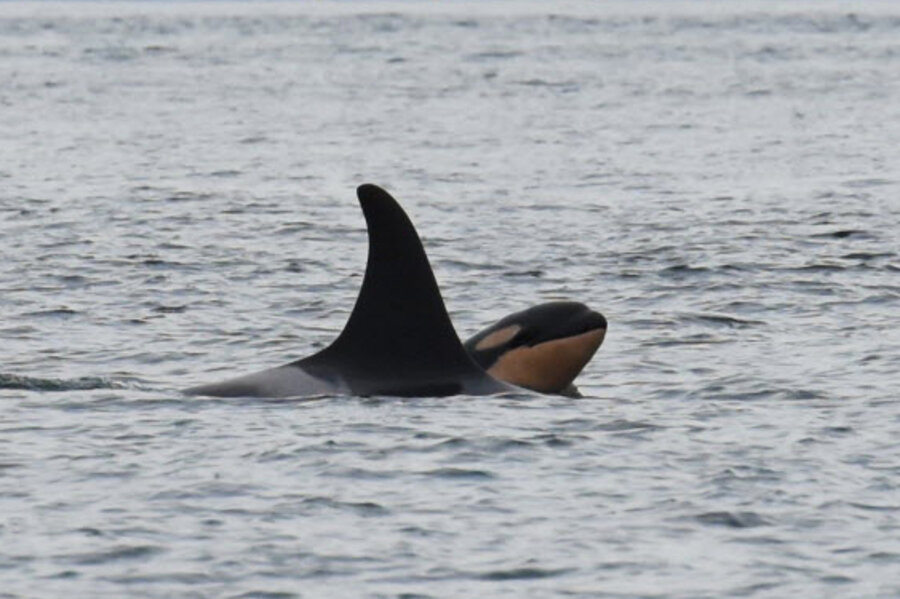'Baby boom' buoys hopes for endangered orca population
Loading...
Endangered whales in the Pacific Northwest are welcoming new reinforcements this year via a "baby boom," further strengthening the region’s orca population that was on the brink of extinction a decade ago.
Aided by state-of-the-art drone footage, researchers confirmed last Saturday night that a baby orca had been born into J Pod, one of three pods of southern-resident orca whales. Five other babies have been born into the pods since last December.
"It's fantastic, it's great news," Michael Harris, executive director of the Pacific Whale Watch Association, told The Seattle Times. "We've got a bit of a Brady Bunch out there right now."
The new birth further bolsters an orca population that seemed destined for extinction. The combined population of J, K, and L pods now stands at 82, Mr. Harris said. The population was 78 ten years ago – when it was given protection under the Endangered Species Act – and last year it dropped to 77 after an orca died from an infection while giving birth.
At that point, Harris said, "some of the most optimistic researchers were saying we might not be able to turn this tide, this slide toward extinction."
Instead the population appears to be rebounding, thanks in large part to strong runs of chinook salmon this summer and last summer. The salmon make up 90 percent of the orcas’ diet, according to Harris. Chinook salmon are also an endangered species.
"We've been saying [it] for years – you can't address recovery of orcas without addressing chinook," Harris said.
At the moment, he added, "there's enough food in the water to support this kind of baby boom." But that might not be the case for very long. He said researchers are predicting "a very difficult run" with far fewer salmon next summer.
And with baby orcas having a 50-50 chance of surviving their first year, a weak salmon run could imperil the population just as its starting to rebuild.
"We're not out of the woods with these babies," Harris said.
The baby, named J53, was first spotted by a drone near Washington’s San Juan Islands last Saturday afternoon.
Federal biologists have been using drones to take thousands of images of the whale populations in recent months, and the technology is proving to be a vital asset in monitoring the health of the population.
The researchers want to be able to accurately track how the whales' body conditions change from year to year, including studying how fat or long they get, and how that may correlate with the population’s food supply.
"We’re really answering a simple question: Are these killer whales getting enough to eat?" John Durban, a marine mammal biologist with NOAA's Southwest Fisheries Science Center, told the Associated Press.
Researchers used to gather these images with helicopters, but the flights were expensive and they had to hover at a greater height to avoid disturbing the animals. Over several weeks in September, Durban and his colleagues remotely operated a drone from a boat. The drone, equipped with a specialized camera and other equipment, was able to hover about 100 feet over the whales, offering some of the most detailed images of the pods the researchers have been able to gather.
Scientists are also using drones to track and monitor other species around the world. Drones have been used to count penguins and seals in Antarctica, steller sea lions in Alaska, and to take breath samples of humpback whales off New England.
Material from the Associated Press was used in this report.






